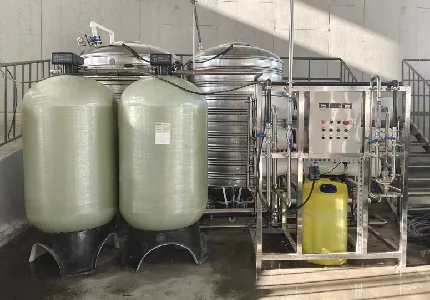loading...
- No. 9, Xingyuan South Street, Dongwaihuan Road, Zaoqiang County, Hengshui, Hebei, China
- admin@zjcomposites.com
- +86 15097380338
- Welcome to visit our website!
frp pressure vessels
Understanding FRP Pressure Vessels A Comprehensive Overview
Fiber Reinforced Polymer (FRP) pressure vessels have gained prominence in various industries due to their superior strength-to-weight ratio, corrosion resistance, and design flexibility. These vessels are essential in applications where conventional materials like metals struggle due to environmental factors or weight constraints. In this article, we will explore the composition, benefits, applications, and challenges associated with FRP pressure vessels.
Composition and Manufacturing Process
FRP pressure vessels are primarily composed of a polymer matrix reinforced with fibers such as glass, carbon, or aramid. This composite structure allows FRP to achieve exceptional mechanical properties while maintaining a lower weight compared to traditional materials. The production of FRP involves several steps, including resin selection, fiber preparation, and the application of manufacturing techniques such as filament winding or vacuum infusion.
Filament winding is the most common method for producing FRP pressure vessels. In this process, continuous strands of fiber are wound around a mandrel in a carefully calculated pattern, which maximizes strength and durability. Once the desired number of layers is achieved, the resin is cured, bonding the fibers together and forming a solid structure. The versatility of FRP materials allows for customization in terms of thickness, design, and performance characteristics based on specific application requirements.
Advantages of FRP Pressure Vessels
One of the foremost benefits of FRP pressure vessels is their lightweight nature. This characteristic reduces transportation costs and simplifies installation processes, particularly in challenging environments. Additionally, FRP exhibits excellent corrosion resistance, making it a suitable choice for storing and transporting aggressive chemicals, seawater, and other corrosive substances. Unlike traditional materials that may suffer from rust or degradation, FRP vessels maintain their integrity even in demanding conditions.
Furthermore, the thermal insulation properties of FRP contribute to energy efficiency in various applications. Since these vessels do not conduct heat as effectively as metals, they can help reduce thermal losses, ensuring that stored materials remain stable under fluctuating temperature conditions.
frp pressure vessels

Applications Across Industries
FRP pressure vessels find significant applications across several industries, including chemical processing, oil and gas, water treatment, and aerospace. In the chemical industry, they are used to store acids, bases, and other hazardous materials due to their resistance to chemical corrosion. In the oil and gas sector, FRP vessels are vital for transporting crude oil and natural gas, especially in offshore environments where corrosion is a constant concern.
Moreover, the water treatment industry utilizes FRP pressure vessels for filtration and storage tasks. Their lightweight and corrosion-resistant nature makes them ideal for use in municipal waste treatment plants and desalination processes. In aerospace, the low weight of FRP is a critical factor in improving fuel efficiency for aircraft.
Challenges and Considerations
Despite their many advantages, the use of FRP pressure vessels does come with challenges. One significant concern involves their susceptibility to impact damage. While FRP is strong, it can be brittle, and impacts may lead to cracking or delamination. Therefore, proper handling and installation techniques are vital to prevent damage during operation.
Another challenge relates to the regulatory standards governing pressure vessels. Manufacturers must ensure compliance with industry-specific codes and standards, which can be complex due to the variety of applications and environments in which FRP vessels are used. This necessitates rigorous testing and quality assurance processes.
Conclusion
FRP pressure vessels represent a versatile and innovative solution for various industrial applications, combining strength, lightweight design, and corrosion resistance. As industries continue to seek efficient and durable materials, the adoption of FRP technology is likely to increase, paving the way for further advancements in pressure vessel design and production. By addressing the existing challenges and ensuring compliance with safety standards, FRP pressure vessels will undoubtedly play a crucial role in the future of material engineering and manufacturing.
-
GRP Structures: The Future of Lightweight, High-Performance EngineeringNewsJun.20,2025
-
FRP Water Tank: High-Performance Storage for Corrosive and Clean Water SystemsNewsJun.20,2025
-
FRP Square Tube: The New Industry Standard for Chemical and Structural ApplicationsNewsJun.20,2025
-
FRP Pultruded Profiles: The Ultimate Choice for Lightweight Structural StrengthNewsJun.20,2025
-
FRP Handrails: The Safer, Smarter, and Stronger Choice for Modern InfrastructureNewsJun.20,2025
-
FRP Grating: The Smart Solution for Durable, Lightweight Industrial FlooringNewsJun.20,2025
-
Why Choose a Galvanized Water Tank for Your Storage NeedsNewsMay.21,2025
